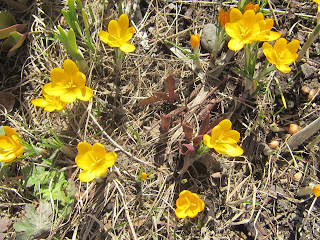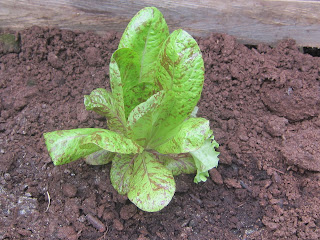When people ask me how to get started with a garden, one of the first questions I ask them is how much time do you have to spend in your garden each day?
Tuesday, 29 December 2020
Time and Your Garden
When people ask me how to get started with a garden, one of the first questions I ask them is how much time do you have to spend in your garden each day?
Monday, 28 December 2020
The English Cottage Garden
I believe people should do what they can to grow some of their own food. I also believe that a garden without flowers is missing an important element.
Sunday, 27 December 2020
A Literacy Garden
I worked, some years back,
as a volunteer literacy tutor and was amazed at what some of the people who I helped learn to read could do.
Thursday, 24 December 2020
Wednesday, 23 December 2020
Bees
Honey bees provide us with much more than honey. The honey bee is a major pollinator of many of our food crops, almonds, apples, avocados, blueberries, cantaloupes, cherries, cranberries, cucumbers, sunflowers, watermelon and many other crops all rely on honey bees.
Tuesday, 22 December 2020
For The Birds
Bird song brightens the day, even when the birds get up much earlier than you do. Song birds are a delight to the eye, as well as, the ear. A bird feeder is one way to bring these colourful charters to the yard. Add a bird house and a bird bath and all their basic needs are met.
However, once they birds are making use of the house, feeder and bath, it is the home owner's responsibility to keep them clean and full. Birds will become dependent upon this source and will suffer if the food is neglected.
Monday, 21 December 2020
Compost
Healthy soil means healthy plants.
How do you keep your soil healthy? Simple, use an organic fertilizer at the end and the beginning of each gardening season. Where can I get organic fertilizer? Easy enough, make your own from material already at hand.
Friday, 18 December 2020
Tips On Accessible Gardening
Anyone, if they want to, can garden. Appropriate design, that is design that understands and incorporates the wants and needs of the individual, is the key.
Thursday, 17 December 2020
What is a Weed?
A weed is...
Tuesday, 15 December 2020
Monday, 14 December 2020
Is A PDC Necessary?
Sunday, 13 December 2020
The Smart Gardener
I never actually stop gardening. I do not think about it all the time. When I talk about gardening in this context, I am considering a bigger picture. How will the garden season evolve over the next few years is one question I consider? What will a changing weather system bring to the growing season? What can we grow that will thrive and feed our families?
Saturday, 12 December 2020
Garden Planning: A Winter Activity
The urge to garden appears long before the growing season begins. I feel the need to plant, something, anything while is still covered in snow. When the temperatures are hovering around zero Celsius.
It is even too early to start seed indoors.
Cucumbers may not be the best plant for the novice but if you know what they need and make the effort to see they get what they need you can grow them and just about anything else. The following short list will give you some tips for growing some of the vegetable garden essentials.
Cucumbers:
The cucumber is a demanding plant. They have an extensive root system that requires regular watering and good healthy soil to grow best. The plant will tolerate a variety of soils but it will do best in a loose well-drained soil that is complemented with organic matter such as well-rotted manure or compost before planting. The soil pH should be between 6.0 and 7.0.
Strawberries:
There are four basic types of strawberries. They are June bearing or spring bearing, ever bearing and day neutral.
The fruits of day neutral plants and ever bearers are usually smaller than June-bearers fruit.
June bearing strawberries are classified into early, mid-season and late varieties.
Onions:
Onions are not all the difficult to grow. First off, you have two types of onions, summer onions and winter onions. Summer onions are fresh onions that come in yellow red and white and have a fairly thin skin.
These are the sweet onions, the ones that you are most likely to find in your sandwich or salad. It is their high water content that makes them sweet.
Companion Planting:
Companion or compatible planting is the first step towards understanding plant communities and how designing you garden as a functioning community of plants that benefit from each others’ company is a natural model that increases your garden’s vitality.
Perhaps, one of the oldest plant communities that we know of is the Three Sisters, beans, corn and squash. It is a First Nations planting method that goes back for several centuries and is often associated with the Iroquois.
You will succeed if you feed the soil organic material such as compost, by the way compost is a great way to reuse kitchen scraps (vegetable) that you might otherwise toss away and turn grass clippings and fallen leaves into food for your soil.
You will succeed if you place the garden where the plants get the sunlight they must have; vegetables need at least six to eight hours of sun each day. Tomatoes and peppers love sun and heat so consider this when planting them.
Vegetables need water and you cannot always rely on the rain, so install a rain barrel and plan for those dry id-summer days. Speaking of planning, make a rough sketch of what will go where before you plant and this will guide you through the planting.
Seed packages give the gardner all the information required to plant correctly. read the pack follow the instructions. be sure put the right plant in the right place. Water when needed.. Nature does a great deal of the work for
Nature does a great deal of the work, but now and then you do have to lend her a helping hand.















